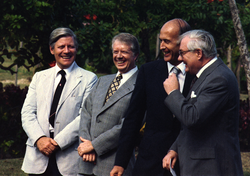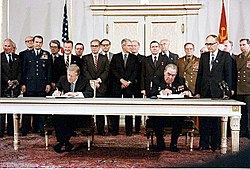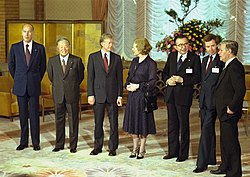This article needs additional citations for verification .(December 2019) |
| ||
|---|---|---|
Personal 76th Governor of Georgia 39th President of the United States Tenure  | ||
This is a list of international presidential trips made by Jimmy Carter, the 39th president of the United States. Jimmy Carter made 12 international trips to 25 different countries during his presidency, which began on January 20, 1977 and ended on January 20, 1981. [1]
Contents
Carter visited five continents: Africa, Asia, Europe, North America, and South America. He was the first president to make a state visit to Sub-Saharan Africa when he went to Nigeria in 1978. His travel included five trips to Europe and three trips to Asia. He also made several trips to the Middle East including Palestine - Gaza Strip to broker peace negotiations. He was awarded the 2002 Nobel Peace Prize for his peacemaking efforts. [2] In 1978, he travelled to Panama City to sign a protocol confirming exchange of documents ratifying the Panama Canal treaties.


























